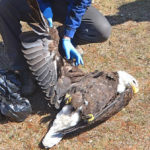
By Fred Bouchard
Plague-ridden Saxony hired the legendary Pied Piper to toot rats out of Hamelin. Other age-old tactics—trapping, shooting, pan-banging—raise fresh collateral issues in densely populated areas, in addition to mess and noise. Chicago in recent years resorted to sniper stealth by siccing 1,000 neutered feral cats on its record rat population.
Passive approaches to rat control yield slow results, as city-centric man confronts Rattus norvegicus, the world’s most populous and prolific urban mammal. Rat fertility is gaining ground as shorter, warmer winters encourage them to squeeze out an extra litter or three a year. Exterminators concur that the East Coast has seen a recent surge in rat numbers.
Humane solutions to excluding vermin from urban human habitations include three basic steps: seal off porous entry points, store food securely, and dispose of trash effectively. But people are generally averse to investing in expensive fortifications and policing their estates, and they are cavalier about jettisoning leftovers. Even pilfer-proof trash bins, an obvious if expensive deterrent, require maintenance and vigilance.
Let’s review practical solutions that might work best for suburban Belmont.
Extermination Option #1: Poison
Once widespread, “pest management techniques” of poisoning have come under fire, as today rodenticides are widely condemned by humanitarians and environmentalists. These include anticoagulant (blood-thinning) rodenticide, and second-generation anticoagulant rodenticides (SGARs). (See “Rodent Poisons Sicken and Kill Birds of Prey,” BCF Newsletter, November 2021.)
Unwanted, indeed alarming, lethal side effects are the collateral killing off of small mammals ingesting SGARs, including skunks, raccoons, squirrels, and rabbits.
Moreover, second-hand kills extend up the food chain when slow-poisoned rats are eaten by foxes, coyotes, and even free-range house cats. Killing off mammal and avian rodent hunters can only result in more rodents.
Extermination Option #2: Electrocution
This winter, Somerville followed Portland, Maine, as the second city in the nation to adopt electrocution devices for rat control, as reported in the Boston Globe. Fifty “Smart Boxes” were deployed in high-incidence areas like Davis Square, each with a capacity to zap and store up to five rats, then report to command central.
This method has the advantage that the boxes collect data (pinpointing locations, numbers, effectiveness) and they cause little environmental harm. However, single-rat battery-operated electrocution boxes, available online for $60 to $70, may prove no more effective than old-fashioned $2 wooden snap-traps or glue traps. Pros and cons are weighed at www.attic-rat.com/electrocutiontraps.
Extermination Option #3: Asphyxiation
Gross chemical deterrents like mothballs and ammonia are highly polluting and toxic to all biota. However, dry ice, inserted in pellet form into rat burrows, releases carbon dioxide (CO2) and asphyxiates them as it sublimates. Commonly used in laboratories to euthanize rodents, CO2 is considered less inhumane than poisoning.
Boston has used this inexpensive alternative since 2016, according to the Boston Globe, with much success in confined spaces like burrows, but not elsewhere, where traps and poison are mainstay controls. This alternative might work in garden and yard areas near foundations.
Mitigation Option: Contraception
Humans now can turn to biochemistry for rodent birth control. Nontoxic botanical solutions, like ContraPest and Conntraceptol, render rats (and presumably other mammals) infertile.
ContraPest works with the nontoxic chemical 4-vinylcyclohexene diepoxide (VCD) to destroy female rats’ ovarian follicles in their immature single-egg form, accelerating what is essentially a natural process in all female mammals. VCD also temporarily impairs sperm production in male rats. The chemicals are dispensed from rodent-only plastic feeding stations that are also nonpolluting. Vendors claim a success rate of 95% effectiveness versus 10% with “barbaric” snap and glue traps.
Homeowners may purchase such appetizingly formulated anti-fertility chemicals to mix with pet foods to bait their own traps. Since rats produce several litters a year, with six or more pups per litter, the reduction of a potentially exponential population growth should soon, or at least eventually, become apparent.
Caveats and constructive instructions
Belmont’s town website discourages homeowners from using pesticides casually: “Spreading rat poison is harmful for wildlife like hawks, raccoons, foxes, etc. Please be cautious if you choose to use this method of rodent deterrent independently of pest control professionals. Use judiciously, and only if absolutely necessary.”
Belmont Health Department’s Director Wesley Chin elaborated on that statement, then responded briefly to newer proposed methods.
Poison: We discourage indiscriminate spreading of poison throughout properties. Please, don’t just toss pellets around. Better to contract with a professional control operator; they know how to keep other animals and kids from harm’s way. Best to coordinate operations with neighbors in adjacent properties, rather than undertake patchwork efforts.
Dry ice: This method is more labor intensive and costly; you have to identify entry and exit holes of burrows, block them off with dirt, pack them with dry ice, and monitor them constantly.
Zap boxes: Electrocution boxes have potential, but we don’t have much experience with them. Somerville’s trial period ends in July. You have to check the box and dispose of the carcass as with primitive snap and glue traps.
Contraception: Birth control as a preventive measure is hit or miss, also labor intensive. Burrows may or may not be active. You may not see immediate results. Somerville tried it and abandoned it as ineffective.
Chin admits: “We’re not trained pest control guys; we learn this info on the fly from the pros.” But he closes by echoing our opening ounce-of-prevention gambit. “Your best option, really? Get rid of all waste and garbage responsibly. Keep your property clean, police it for vulnerable spots. Rats feast on compost from cracked leaky bins and garden clippings. Bird feeder overflow is like candy to them. Better use preventive measures!”
Fred Bouchard is a 30-year Belmont resident and lifelong amateur naturalist.


Sorry, the comment form is closed at this time.